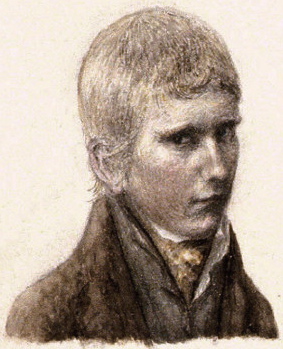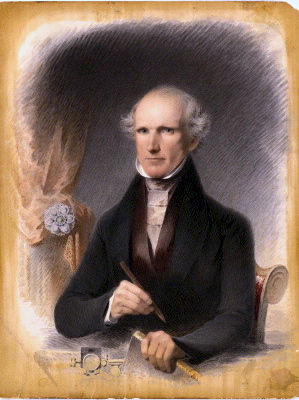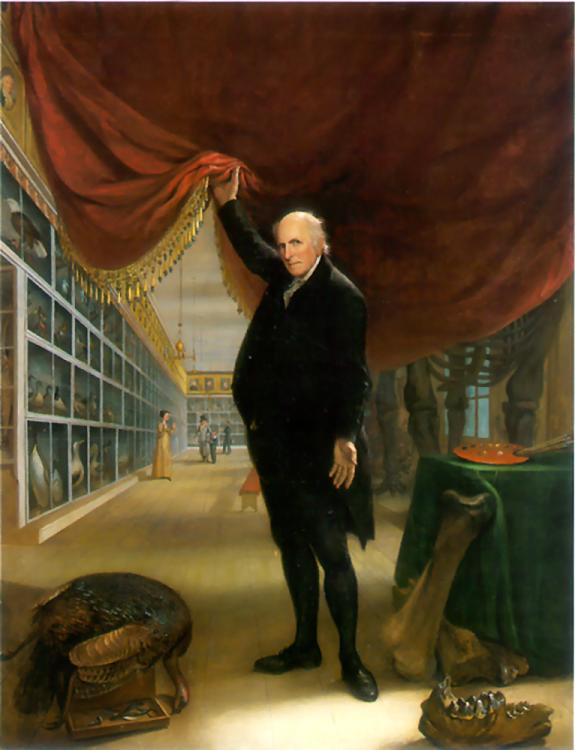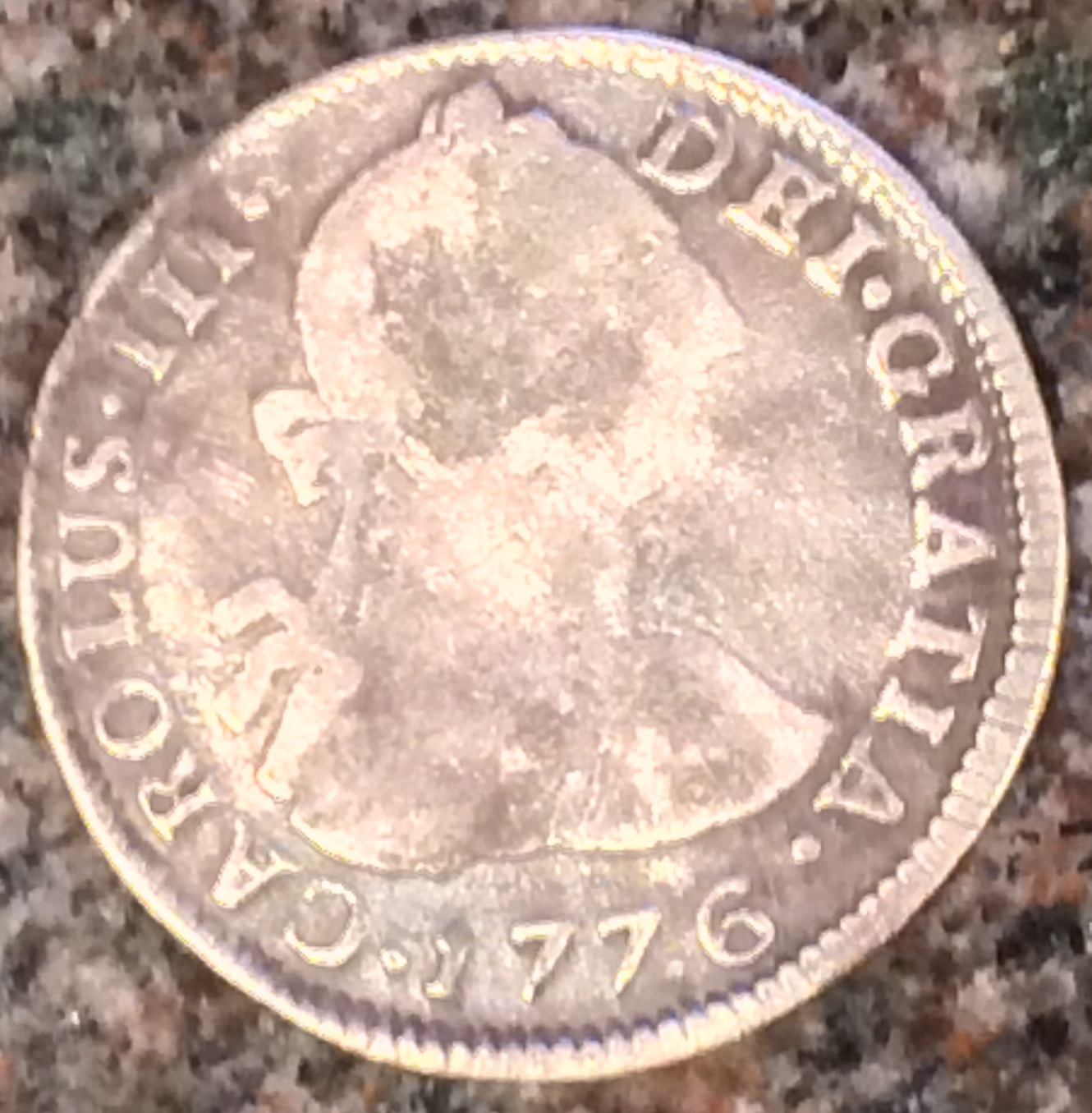|
James B. Longacre
James Barton Longacre (August 11, 1794 – January 1, 1869) was an American portraitist and engraver, and the fourth chief engraver of the United States Mint from 1844 until his death. Longacre is best known for designing the Indian Head cent, which entered commerce in 1859, and for the designs of the Shield nickel, Flying Eagle cent and other coins of the mid-19th century. Longacre was born in Delaware County, Pennsylvania, in 1794. He ran away to Philadelphia at age 12, where he became an apprentice in a bookstore. His artistic talent developed and he was released to apprentice in an engraving firm. He struck out on his own in 1819, making a name providing illustrations for popular biographical books. He portrayed the leading men of his day; support from some of them, such as South Carolina Senator John C. Calhoun, led to his appointment as chief engraver after the death of Christian Gobrecht in 1844. In Longacre's first years as a chief engraver, the Philadelphia Mint ... [...More Info...] [...Related Items...] OR: [Wikipedia] [Google] [Baidu] |
Christian Gobrecht
Christian Gobrecht (December 23, 1785 – July 23, 1844) was the third Chief Engraver of the United States Mint from 1840 until his death in 1844. He was responsible for designing the famous " Seated Liberty" designs, which were in turn the direct inspiration for the design of the Trade Dollar. He designed the Gobrecht Dollar, which was struck in small quantities from 1836 to 1838 and later inspired the Flying Eagle cent. He also designed the obverse sides for the Liberty head (aka Coronet Head) Quarter Eagle, Half Eagle, and Eagle gold coins, as well as the "braided hair" type Half cent and Large cent coins. Early life and career Gobrecht was born on December 23, 1785, in Hanover, Pennsylvania, to Reverend John C. Gobrecht, who came to America from Germany in 1755, and Elizabeth Sands, with ancestry going back to 1642 in Plymouth Colony. After apprenticing in Manheim, Pennsylvania, he engraved ornamental clockworks in Baltimore, Maryland, until he moved to Philadelphia in ... [...More Info...] [...Related Items...] OR: [Wikipedia] [Google] [Baidu] |
Delaware County, Pennsylvania
Delaware County, colloquially referred to as Delco, is a County (United States), county in the Commonwealth (U.S. state), Commonwealth of Pennsylvania. With a population of 576,830 as of the 2020 census, it is the List of counties in Pennsylvania, fifth-most populous county in Pennsylvania and the List of counties in Pennsylvania, third-smallest in area. The county was created on September 26, 1789, from part of Chester County, Pennsylvania, Chester County and named for the Delaware River. The county is part of the Delaware Valley, Southeast region of the commonwealth. Delaware County borders Philadelphia, the List of United States cities by population, nation's sixth-most populous city, to its northeast. It also is adjacent to the consolidated city-county, city-county of Philadelphia County, Pennsylvania, Philadelphia County and is included in the Philadelphia–Camden, New Jersey, Camden–Wilmington, Delaware, Wilmington, PA–New Jersey, NJ–Delaware, DE–Maryland, MD me ... [...More Info...] [...Related Items...] OR: [Wikipedia] [Google] [Baidu] |
William M
William is a masculine given name of Germanic origin. It became popular in England after the Norman conquest in 1066,All Things William"Meaning & Origin of the Name"/ref> and remained so throughout the Middle Ages and into the modern era. It is sometimes abbreviated "Wm." Shortened familiar versions in English include Will or Wil, Wills, Willy, Willie, Bill, Billie, and Billy. A common Irish form is Liam. Scottish diminutives include Wull, Willie or Wullie (as in Oor Wullie). Female forms include Willa, Willemina, Wilma and Wilhelmina. Etymology William is related to the German given name ''Wilhelm''. Both ultimately descend from Proto-Germanic ''*Wiljahelmaz'', with a direct cognate also in the Old Norse name ''Vilhjalmr'' and a West Germanic borrowing into Medieval Latin ''Willelmus''. The Proto-Germanic name is a compound of *''wiljô'' "will, wish, desire" and *''helmaz'' "helm, helmet".Hanks, Hardcastle and Hodges, ''Oxford Dictionary of First Names'', Oxfor ... [...More Info...] [...Related Items...] OR: [Wikipedia] [Google] [Baidu] |
Gold Dollar
The gold dollar or gold one-dollar piece is a gold coin that was struck as a regular issue by the United States Mint, United States Bureau of the Mint from 1849 to 1889. The coin had three types over its lifetime, all designed by Mint Chief Engraver James B. Longacre. The Type 1 issue has the smallest diameter (0.5 inch =12.7mm) of any United States coin minted to date. A gold Dollar coin (United States), dollar coin had been proposed several times in the 1830s and 1840s, but was not initially adopted. United States Congress, Congress was finally galvanized into action by the increased supply of bullion caused by the California gold rush, and in 1849 authorized a gold dollar. In its early years, silver coins were being hoarded or exported, and the gold dollar found a ready place in commerce. Silver again circulated after Congress in 1853 required that new coins of that metal be made lighter, and the gold dollar became a rarity in commerce even before federal coins vanished ... [...More Info...] [...Related Items...] OR: [Wikipedia] [Google] [Baidu] |
Franklin Peale
Benjamin Franklin Peale (born Aldrovand Peale; October 15, 1795 – May 5, 1870) was an American officer of the Philadelphia Mint from 1833 to 1854. Although Peale introduced many innovations to the Mint of the United States, he was eventually dismissed amid allegations he had used his position for personal gain. Peale was a son of painter Charles Willson Peale, and was born in the Philadelphia Museum, a museum of curiosities which his father ran in Philadelphia. For the most part, Franklin Peale's education was informal, though he took some classes at the University of Pennsylvania. He became adept in machine making. In 1820, he became an assistant to his father at the museum, and managed it after Charles Peale's death in 1827. In 1833, Peale was hired by the Mint, and was sent for two years to Europe to study and report back on coining techniques. He returned with plans for improvement, and designed the first steam-powered coinage press in the United States, installed i ... [...More Info...] [...Related Items...] OR: [Wikipedia] [Google] [Baidu] |
Philadelphia Mint
The Philadelphia Mint is a branch of the United States Mint in Philadelphia. It was built in 1792 following the Coinage Act of 1792, in order to establish a national identity and the needs of commerce in the United States, and is the first and oldest national mint. History First building (1792–1833) The Coinage Act of 1792 entered into law on April 2, proclaiming the creation of the United States Mint. Philadelphia at that time was the nation's capital, and the first mint facility was built there. David Rittenhouse, an American scientist, was appointed the first director of the mint by President George Washington. Two lots were purchased by Rittenhouse on July 18, 1792, at Seventh Street and 631 Filbert Street in Philadelphia for $4,266.67. The next day, demolition of an abandoned whiskey distillery on the property began. Foundation work began on July 31; by September 7, the first building was ready for installation of the smelting furnace. The smelt house was the ... [...More Info...] [...Related Items...] OR: [Wikipedia] [Google] [Baidu] |
John C
John is a common English name and surname: * John (given name) * John (surname) John may also refer to: New Testament Works * Gospel of John, a title often shortened to John * First Epistle of John, often shortened to 1 John * Second Epistle of John, often shortened to 2 John * Third Epistle of John, often shortened to 3 John People * John the Baptist (died ), regarded as a prophet and the forerunner of Jesus Christ * John the Apostle (died ), one of the twelve apostles of Jesus Christ * John the Evangelist, assigned author of the Fourth Gospel, once identified with the Apostle * John of Patmos, also known as John the Divine or John the Revelator, the author of the Book of Revelation, once identified with the Apostle * John the Presbyter, a figure either identified with or distinguished from the Apostle, the Evangelist and John of Patmos Other people with the given name Religious figures * John, father of Andrew the Apostle and Saint Peter * Pope John ( ... [...More Info...] [...Related Items...] OR: [Wikipedia] [Google] [Baidu] |
Engraving
Engraving is the practice of incising a design on a hard, usually flat surface by cutting grooves into it with a Burin (engraving), burin. The result may be a decorated object in itself, as when silver, gold, steel, or Glass engraving, glass are engraved, or may provide an Intaglio (printmaking), intaglio printing plate, of copper or another metal, for printing images on paper as prints or illustrations; these images are also called "engravings". Engraving is one of the oldest and most important techniques in printmaking. Wood engravings, a form of relief printing and stone engravings, such as petroglyphs, are not covered in this article. Engraving was a historically important method of producing images on paper in artistic printmaking, in mapmaking, and also for commercial reproductions and illustrations for books and magazines. It has long been replaced by various photographic processes in its commercial applications and, partly because of the difficulty of learning the techni ... [...More Info...] [...Related Items...] OR: [Wikipedia] [Google] [Baidu] |
Flying Eagle Cent
The Flying Eagle cent is a one- cent piece struck by the Mint of the United States as a pattern coin in 1856 and for circulation in 1857 and 1858. The coin was designed by Mint Chief Engraver James B. Longacre, with the eagle in flight based on the work of Longacre's predecessor, Christian Gobrecht. By the early 1850s, the large cent (about the size of a half dollar) being issued by the Mint was becoming both unpopular in commerce and expensive to mint. After experimenting with various sizes and compositions, the Mint decided on an alloy of 88% copper and 12% nickel for a new, smaller cent. After the Mint produced patterns with an 1856 date and gave them to legislators and officials, Congress formally authorized the new piece in February 1857. The new cent was issued in exchange for the worn Spanish colonial silver coin that had circulated in the U.S. until then, as well as for its larger predecessor. So many cents were issued that they choked commercial channels, especiall ... [...More Info...] [...Related Items...] OR: [Wikipedia] [Google] [Baidu] |
Shield Nickel
The Shield nickel was the first United States five-cent piece to be made out of copper-nickel, the same alloy of which American nickels are struck today. Designed by James B. Longacre, the coin was issued from 1866 until 1883, when it was replaced by the Liberty Head nickel. The coin takes its name from the motif on its obverse, and was the first five-cent coin referred to as a "nickel"—silver pieces of that denomination had been known as half dimes. Silver half dimes had been struck from the early days of the United States Mint in the late 18th century. Those disappeared from circulation, along with most other coins, in the economic turmoil of the Civil War. In 1864, the Mint successfully introduced low-denomination coins, whose intrinsic worth did not approach their face value. Industrialist Joseph Wharton advocated coins containing nickel—a metal in which he had significant financial interests. When the Mint proposed a copper-nickel five-cent piece, Congress required ... [...More Info...] [...Related Items...] OR: [Wikipedia] [Google] [Baidu] |
Indian Head Cent
The Indian Head cent was a one-cent coin ($0.01) produced by the United States Bureau of the Mint from 1859 to 1909. It was designed by James Barton Longacre, the Chief Engraver at the Philadelphia Mint. From 1793 to 1857, the cent was a copper coin about the size of a half dollar. The discovery of gold in California caused a large inflation in prices. As gold became more abundant, the price of copper rose. Cent and half-cent manufacture was one of the only profit centers for the Mint and by 1850 it began looking for alternatives. In 1857, the Mint reduced the size of the cent and changed the composition to 12% nickel and 88% copper (copper-nickel), issuing a new design, the Flying Eagle cent. The new pieces were identical in diameter to modern cents, though thicker. This was the first use of copper-nickel for United States coins. The copper-nickel made them look brighter and they began to be called "White cent" or "Nicks". In 1858, the Flying Eagle was replaced with the I ... [...More Info...] [...Related Items...] OR: [Wikipedia] [Google] [Baidu] |







